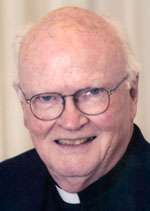In its Pastoral Constitution on the Church in the Modern World, the Second Vatican Council described the common good as “the sum of those conditions of social life which allow social groups and their individual members relatively thorough and ready access to their own fulfillment” (No. 26).
In “Laudato Si’, on Care for Our Common Home,” Pope Francis refers to the common good as “a central and unifying principle of social ethics” (No. 156) and borrows the words I’ve just quoted from Vatican II to define it.
The common good is not the sum of all the individual goods, nor is it a utilitarian kind of greatest good for the greatest number of people.
It involves rather a conscious sense of respect for all people, an acknowledgment of the basic human dignity of everyone and a commitment to work for the promotion of conditions in society that encourage the development of each person’s human potential.
An image that helps the individual self-interested mind wrap itself around the notion of the common good is the image of the old-fashioned inner tube and a rubber tire. The wholeness and roundness of the tire suggests the oneness of society.
[hotblock]
That image applies today to tires manufactured with the latest technology long after the inner tubes fell out of fashion. You may remember plunking yourself in an inner tube used as a flotation device in a swimming pool or on a lake when you were a child.
In any case, the inner tube’s potential for wear and tear — the potential for a blowout that can flatten the entire tire (remember the rubber patches on those tubes?) — serves to remind that it is in the interest of the whole tire that attention be paid to a small section in need of a plug or patch. Promotion of the common good protects the ultimate good of the individual.
Let that imagery go to work to persuade you of the oneness of society (the whole tire) and the importance to the whole of being attentive to one small area of weakness and vulnerability.
We should be paying more attention to the common good in this political season of presidential primaries. Think about the condition of family life in America (and around the world).
What about the condition of human dignity? Education? Housing? Health care, employment? Peace? The environment? Personal and national security? All of these social conditions relate to the common good.
Alfred Lord Tennyson once wrote, “Ah! When will all men’s good/ Be each man’s rule, and universal peace/ Lie like a shaft of light across the land?”
If the “tire” I mentioned earlier appears to be strong, but has a cut, leak or other point of vulnerability at just one small point, the whole thing will soon collapse. Think of this as the “collapse of the common good.”
One, small, unattended point of weakness or vulnerability can lead to the collapse of the whole thing. It is in the interest of the rich and powerful to assist the poor and powerless; they’re all part of the same tire.
All of us have to do a better job of understanding the “tire” that is the common good and then convince ourselves and our elected representatives to do all that must be done to keep the only tire we have in good repair.
This much is sure: A better understanding of the common good will lead to improved social conditions not only in the U.S. but around the world, and thus to fuller development of human potential.
***
Jesuit Father Byron is university professor of business and society at St. Joseph’s University, Philadelphia. Email: wbyron@sju.edu.




Share this story